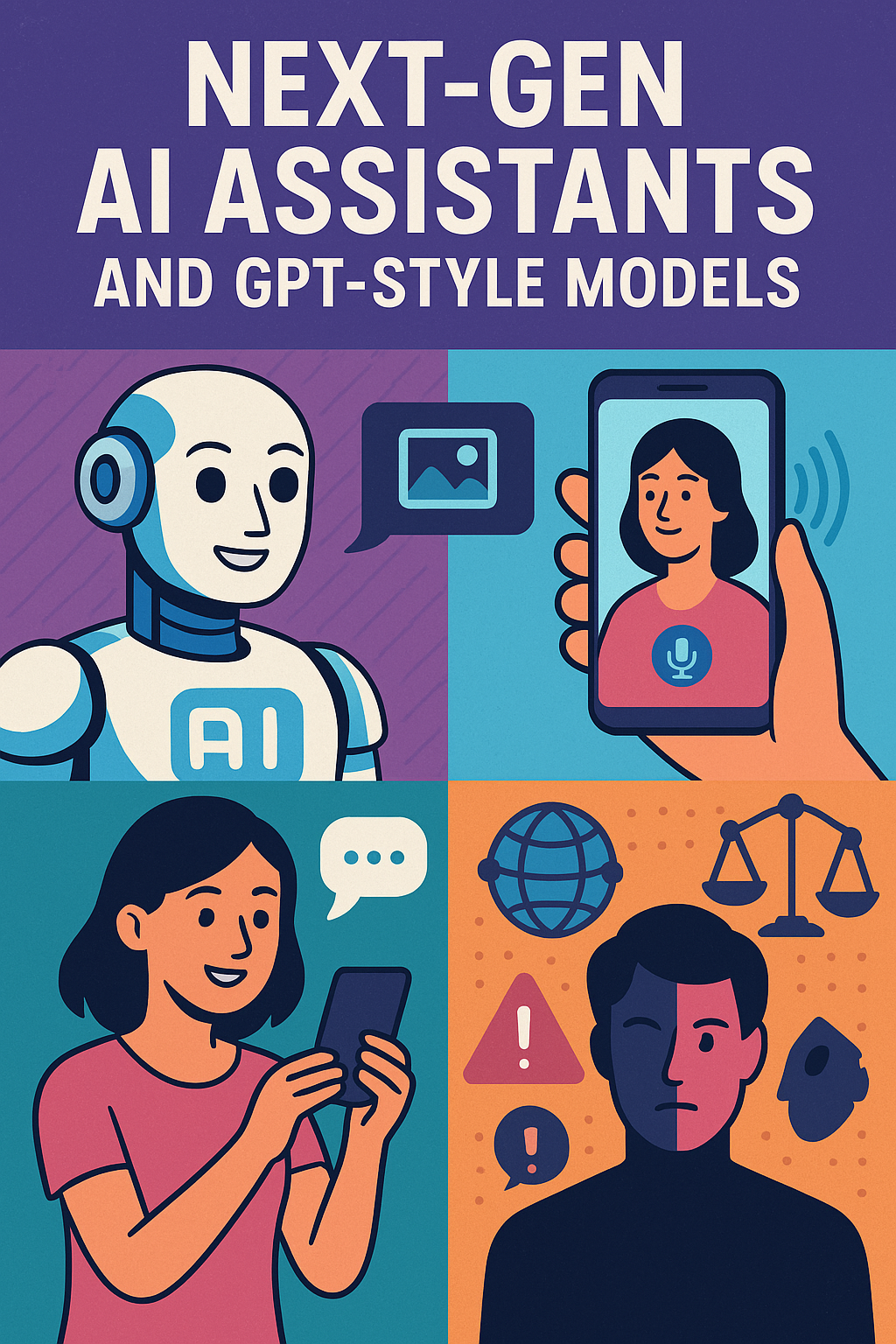Introduction
Artificial Intelligence has come a long way—and fast. Over the past few years, large language models (LLMs) like OpenAI’s GPT series have gone from quirky chatbots to powerful tools capable of writing essays, summarizing documents, coding apps, and more. But that’s just the beginning.
As we move deeper into 2025, we’re likely to see even more advanced versions of these models—think something like a "GPT-6" or other competitors—taking things to the next level. These new systems will be multimodal, meaning they won’t just work with text. They’ll understand and generate images, audio, video, and maybe even haptic feedback, creating richer, more dynamic ways to interact with technology.
But with all this potential comes big questions. Can we trust what these systems produce? How do we keep them from being used to mislead or manipulate? And who's responsible when things go wrong?
Let’s take a closer look at where things are headed.

1. How GPT-Style Models Are Evolving
From Simple Text to Multimodal Powerhouses
The roots of today’s AI go back to models like Google’s BERT (launched in 2018) and OpenAI’s GPT-3 (2020), which showed the world just how good machines could get at understanding and generating language. Fast forward to GPT-4 (2023), and we started seeing early signs of multimodal AI—models that could understand not just words, but also images.
In 2025, we’re expecting even more exciting upgrades, such as:
- True Multimodal Integration: Models that handle text, visuals, audio, and even video inputs in one seamless experience.
- Real-Time Learning: AI that can keep learning as it goes—without needing to be completely retrained.
- Smarter, More Personalized Interactions: Assistants that remember your past conversations and preferences.
- Fewer Hallucinations: Less of that frustrating "confidently wrong" behavior AI sometimes shows.
The Rise of the Competition
While OpenAI is still leading the pack, the AI race is heating up. Other players bringing innovation to the table include:
- Google’s Gemini (the new evolution of Bard)
- Anthropic’s Claude, designed with safety in mind
- Meta’s LLaMA, offering open-source access
- Mistral and Falcon, building leaner, more efficient models
Each one brings something different—whether it’s transparency, affordability, or ethical alignment.
2. Where Next-Gen AI Assistants Are Making an Impact
A. Personal AI Companions
Tomorrow’s digital assistants won’t just help you set reminders. They’ll know you—really well. Think of them as your digital twin, helping you navigate life with:
- Tailored Recommendations: Whether it’s what to eat, watch, or read—based on your personal habits and tastes.
- Emotionally Aware Responses: They’ll pick up on your tone or facial expressions and adjust how they communicate.
- Contextual Memory: They’ll remember past chats and follow up just like a good friend would.
Imagine this: You finish a Zoom call, and your AI assistant not only drafts a follow-up email, but summarizes the meeting, highlights action points, and reminds you what you said about the topic three weeks ago.
B. Work and Enterprise Automation
AI is already transforming how businesses operate—and it’s only getting better.
- Customer Service 2.0: AI chatbots that can actually solve problems instead of frustrating people.
- AI in Professional Fields: From legal research to medical diagnostics, AI tools are making professionals faster and more efficient.
- Fast-Track Content Creation: Need 10 ad copies in different tones or languages? Done in seconds.
Case in point: One Fortune 500 company slashed their customer service costs by 40% after introducing an AI assistant that could handle 80% of support tickets—leaving only the tricky ones for humans.
C. Making Education and Accessibility Smarter
The future of learning and inclusion also looks brighter with AI:
- Real-Time Translation: Making global classrooms a reality.
- Customized Learning Styles: Visual, auditory, interactive—AI will adapt to how you learn best.
- Assistive Technology: From describing images for the visually impaired to turning speech into text for the deaf or hard of hearing.
3. Ethical Concerns: Navigating the AI Minefield
A. When AI Gets Too Good at Faking It
The same tech that makes AI assistants amazing can also be misused. We’re seeing:
- Deepfakes: AI-generated videos of public figures saying or doing things they never did.
- AI-Driven Scams: Hyper-personalized phishing emails or cloned voices used in fraud.
- Loss of Trust: When you can’t tell real from fake, who do you believe?
B. The Governance Dilemma
AI development is outpacing regulation. Major concerns include:
- Transparency: Should you always be told if content is AI-generated?
- Bias and Fairness: How do we make sure AI doesn't reinforce stereotypes or marginalize groups?
- Global Standards: While the EU is pushing comprehensive regulation, others like the U.S. take a more hands-off approach. This could lead to fragmentation and loopholes.
C. Fighting Back with Smarter Policies
There are ways to keep things in check, including:
- Digital Watermarks: Tags that help identify AI-generated content.
- Stronger Platform Rules: Social media platforms stepping up to label or filter manipulated media.
- AI Education: Teaching people—especially kids—how to spot fake content and understand how AI works.
Conclusion: A Future Full of Promise... and Pressure
Next-gen AI assistants are about to become deeply woven into our daily lives. They’ll help us work smarter, live healthier, and stay more connected. But if we don’t address the ethical and societal implications head-on, we risk losing control of the very tools we built to help us.
So, what’s the way forward?
- Build responsibly: Innovate, but with safety in mind.
- Regulate collaboratively: Tech companies, governments, and communities need to work together.
- Stay informed: The more the public understands AI, the less likely it is to be misused.
By 2025, AI won't just be something we use—it’ll be a partner. The challenge is making sure it's a partnership we can trust.